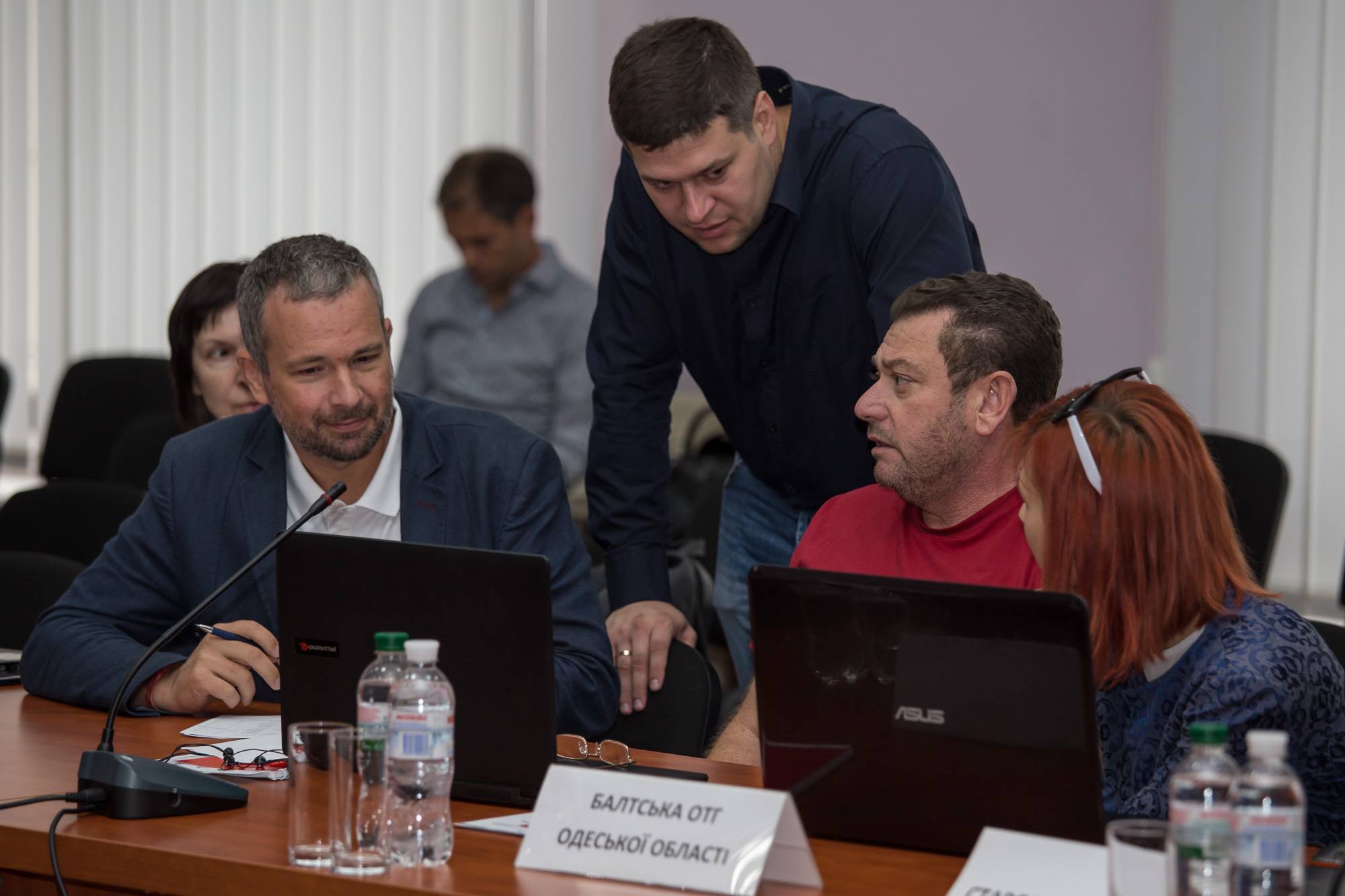
Source: Participatory Budgeting Kyiv.
The article was originally published at Eurozine. By UDi Associate Dmytro Khutkyy
Distrust in authorities, low levels of civic activism, social problems and inefficient governance undermine the legitimacy of governments and create a demand for new institutional solutions for enhanced democracy and better public services. In the digital world, these solutions are expected to be high-tech. To address the challenge, authorities usually try to increase transparency by developing websites. This is insufficient, as people also expect greater accountability and empowered participation. Therefore, governments and civil society leaders are seeking social innovations. One such solution, a comprehensive one, is participatory budgeting (also known as PB).
It originated in Porto Alegre, Brazil, grounded in the relatively simple idea that citizens should have a direct say in public budgets that impact them.1 When the Workers’ Party won the mayor’s office in the city, it inherited a bankrupt municipality and a disorganized bureaucracy; consequently, during its first two years in office, the new administration tried different mechanisms to tackle financial constraints, provide citizens with a direct role in the government’s activities, and invert the social spending priorities of previous administrations; as a result, participatory budgeting was born through this experimental process.2
In contrast to many other civic technologies, focusing on only one point in the policymaking cycle, participatory budgeting embraces all the stages: from setting up priorities in a deliberative process to decision-making and on to co-implementation, accompanied by monitoring and control. It can work at different levels of governance: town districts, whole settlements, or even states. This approach turned out to be so appealing to the public that it soon spread to other cities in Brazil and other countries Latin America. Now it is practiced in over 1,500 cities3 from the United States to Europe and Japan.

Source: Participatory Budgeting Kyiv.
Initial design
Participatory budgeting can be defined as a decision-making process through which citizens deliberate and negotiate about the distribution of public resources.4 It is envisioned as a grassroots endeavour, including community self-organization and decision-making. Basically, local residents discuss their collective needs and decide which projects to fund. The classic example is the Porto Alegre model – a year-long cycle of discussions and decisions, which it is mandatory for the authorities to enact. The approach is focused on identifying demands and setting priorities for funding. Moreover, the higher ambition is to use this format to distribute not only discretionary funds spent on infrastructure projects, but also regular funds.
Participatory budgeting, in its original versions as part of a transformative left project, was one part of a broader set of institutional reforms: 1) open meetings where citizens decided on priorities; and 2) institutional reforms to subordinate the local bureaucracy to citizen demands.5 Further, in a model of deeper empowerment implying fundamental changes, community members define their needs and obtain sufficient resources. According to Vincent Villano, co-chair of the City-Wide Steering Committee of the Participatory Budgeting Process in New York City: ‘The type of participatory democracy I would like to see would have a budget process whereby people begin [it] by asking what the needs of the people are… All needs should be met in a truly democratic system – one that is based on equity, where everyone gives what they can and everyone gets what they need.’6
Favourable conditions
Participatory budgeting takes into account the general situation, plus internal and external conditions. Overall, the communities establishing participatory budgeting seem already to have high levels of civic activism. In addition, on average, they have proactive views; that is, an inclination towards the idea of participation. Elisabeth Clemens, professor and chair in sociology at the University of Chicago, explains that participatory democracy tends ‘to be adopted in communities where the constituencies are inclined to participate. There is an ideological commitment to the ideal of participatory democracy.’7 The very examples of the existing cases provided an argument for new projects. Also, it is good, when there is a possibility to involve experts who have experience in implementing participatory budgeting initiatives. And engaging local authorities as partners is vital for a project’s success.
Mechanisms
Participatory budgeting procedures vary from place to place, but there are certain common patterns. First and foremost, it is a grassroots process in the sense that local communities meet and decide upon projects they would like to be funded and conducted. ‘All processes begun with assemblies, or open meetings, throughout the town or city, ending when a series of selected projects is forwarded for inclusion in the yearly budget.’8 In contemporary settings, this can be done online – in forums or social media discussion groups. An alternative approach is when the initiative rests with self-emerging authors of projects, who offer their visions to the public. Of course, authors have to take into account the financial boundaries imposed by local authorities. Still, they can and do attract additional financing from individuals and organizations. When the detailed projects are set, they are communicated to local authorities, which then take responsibility for funding and implementing them. An alternative design implies a pool of projects, which are communicated to local residents, who then vote, so that the projects with most votes are funded. Moreover, in some cases community members participate in implementation personally too. The primary area for improvement is monitoring and control.
In smaller settlements or organic neighbourhoods, offline meetings work well, while for bigger cities online deliberation, voting, and progress tracking is more practical. Finally, it is always possible that face-to-face and digital formats complement each other. For instance, meetings in local communities are practiced in New York City,9 online project submission, discussions in social media, and e-voting are realised in Kyiv,10 and a mixed offline-online involvement model is implemented in Paris.11

(L-r) Serhiy Loboyko, CID NaUKMA, Serhii Karelin, EGAP, and Eduard Rabinovych, Balta City Council, debate a unified e-services platform for Ukraine. Source: Center for Innovations Development
Typical projects relate to transport system, community safety, energy-saving, environment, communal services, public space, information technologies, education, health, social welfare, sport, tourism, culture, and civic activism. Examples include new parks, on-site museums, libraries, renovated schools, children’s playgrounds, co-working areas, high-tech innovation hubs, hackathons, sport facilities in public areas, sculptures, street art, fountains, and festivals.
Inclusiveness and participation
Participatory budgeting attracts people with low income and low education, the elderly, retired, unemployed, and also the white working class. The public is comprised of ‘a lot of working class white, so a very complicated mix,’ says Elisabeth Clemens, an expert in participatory budgeting in Chicago.12 One positive effect is that participatory budgeting promotes and attracts higher representation by politically marginalized groups (the less well-off, the elderly, and ethnic minorities). As Villano, the practitioner in NYC, states: ‘there is a much higher level of participation among all marginalized groups in the participatory budgeting process than in local elections.’13 A definite participation pattern is observed: up to 10% of local residents participate and as many as millions of people at state level. ‘Typically, PB processes drew large numbers of participants, with in some recorded cases, as much as 10% of the total population of a town coming to a meeting at some point.’14 As Gianpaolo Baiocchi, associate professor at the University of New York, estimates: ‘I think 3 million people came to the Brazilian capital for meetings.’15
Democratic quality
Participatory budgeting definitely demonstrates the working principles of democracy. There is large-scale participation, direct delivery of decisions made to authorities, and overall justice. According to Baiocchi: ‘First, it was a debate in which all had to participate. PB was the only connector between citizenry and local state and everybody, rich or poor, organized or unorganized had to debate their proposals within the new structured public sphere. Second, deliberations were structured by principles of social justice.’16 The projects conform to clear rules; they are procedurally transparent, due to the open and recorded meetings.
Challenges and counteractions
Participatory budgeting has a number of challenges. One issue is inequality – in participation, in influence, and in management. A fundamental issue is inequality – if is left as it is, the effect of self-organization, whereby people in power tend to gain more power, would result in enormous inequalities in specialization, voting, participation and executive power.17 Efforts to restore equality via awareness raising campaigns can help in this area.
One might even raise the question of the unsustainability of the participatory budgeting process due to its dependence on relations with authorities. Also, there is a space for external self-seeking influence by elites. To a substantial degree, there is a risk of losing the essence of the emancipatory goals of participatory budgeting. Politicians might talk about citizen involvement, instead of empowerment. Therefore, a definite answer should be the institutionalization of the movement with clear rules and control mechanisms.
Perceived restrictions in funding are limiting the spread of participatory budgeting too. Take New York: ‘We are only dealing with capital funds; we are not dealing with expense funds… We are dealing with a very small percentage. If you look at the participatory budgeting report in the first year, I think, it represents like .06% of the entire capital budget of NYC.’18 Usually, the percentage is about 1-2% of city budget. To counter that, project leaders should advocate to base participatory budgeting projects on peoples’ needs, not on current limitations and demonstrate the potential funding sources, like a bigger share of municipal budgets and crowdfunding opportunities.
Universal recommendations regarding these challenges include following efficient procedures and maintaining organizational support from social movements. In this respect, it is extremely important to establish and follow rational procedures, which will protect bottom-up demands from voluntarism or ignoring.19
Institutions created
Participatory budgeting has a number of well-developed institutions. The projects start with participation as a practice. In the words of a PB practitioner: ‘When you give people an opportunity to make a meaningful decision, they are going to jump on that.’20 Thus, the meetings in local communities develop into neighbourhood associations and assemblies. Formal agreements with stakeholders, especially authorities, in some cases facilitate promotion of the project and boost fundraising, but they are not obligatory and depend on relations with stakeholders. A useful tool to help guide the process is a codified set of techniques for implementing participatory budgeting – a kind of handbook. Stronger institutionalization can take the form of special laws. Baiocchi, who is a scholar of best practice in participatory budgeting worldwide, provides examples: ‘Some cities institutionalize it as laws… In some countries, it became a national law. So, in Peru, there is a national law on participatory budgeting.’21 A significant development is the creation of such social position as representative in a mayor’s office or even a budget planning office, democratically formed by citizens.
Synergies
Participatory budgeting indeed fosters grassroots involvement and is useful for quick self-organization of emergency cooperation in response to natural disasters and then to protest movements. ‘In the case of the United States, we have the participatory budgeting of New York… It is connected to other forms of activism, for example, the connection with Sandy – the storm… First there was the storm, then the reconstruction efforts, and then people came with Occupy Sandy – Participatory Sandy.’ – says Baiocchi, who has observed the events in New York himself.22 It is notable that participation in budgeting facilitates participation in other domains. A lot can be learnt from global practice: ‘In the Brazil cases, often what you have is the budgeting… and then it tends to incite participation in similar areas. So, for example, you have health council or social service council.’23
Effect for citizens and communities
First of all, participatory budgeting enhances community-building. Vincent Villano, the PB practitioner in NYC: ponders: ‘So, I think, it has all sorts of positive impacts – it is a community-building process that needs all sorts of relationships, and education – it is really positive and addictive. Who doesn’t want to be in a more connected community and feel less alone than they already are?’24 Participants demonstrate stronger cooperation and higher involvement in civic life. Local residents enjoy positive feelings of belonging and satisfaction. Citizens also develop a better understanding of local governance. People have strong motivation for action and demonstrate high actual participation. ‘They would say: I am so passionate about the idea; I want to volunteer my time to convert that idea into an actual project’, Villano says of New Yorkers.25 Finally, participants form better skills and obtain empowerment for civic society activities.
Impact on democracy as a social system
On a larger system level, participatory budgeting builds stronger relationships between citizens and authorities, based on mutual understanding. ‘The fact that the PB had promoted a reform of the relationship between administration and civil society in democratic terms is no small matter.’26 Thus, participatory budgeting projects produce closer and more efficient cooperation with authorities. Valuable lessons can be learnt from the US practice: ‘It was really the participatory budgeting process that put them in a situation where they were working hand in hand, shoulder to shoulder, with a number of community institutions that have been in that area for much longer. The people’s willingness to work together, like the budget delegates, those are the community members participating in participatory budgeting process at the highest level possible.’27 There is a notable growth of empowerment and decentralization of decision-making to citizens. Vincent Villano in New York puts this simply: ‘Participatory budgeting… is not only “we just will listen”… “thank you very much”, but “we are actually going to shift some decision-making power to you”.’28
Conclusion
Participatory budgeting has proved its effectiveness as a solution in a wide range of settings: in different countries, at all levels of governance, both offline and online. Its power is to a large extent due to binding all stages of the policy making cycle: agenda-setting, deliberation, decision-making, co-implementation, monitoring and control. It raises the quality of life of local people, establishes a dialogue between citizens and authorities, and creates an efficient format for collaboration towards local development. Indeed, it is a powerful institution for an empowered citizen participation in public policy.
This text is based on a panel presentation by the author at the 28th European Meeting of Cultural Journals on Saturday, 21 October 2017, in Tartu, Estonia.
- Baiocchi, G., & Ganuza, E. 2014. Participatory Budgeting as if Emancipation Mattered. Politics & Society, 42, 1, 29-50.
- Boutall, T. 2009. ‘Participatory Budgeting.’ In Participedia. Strengthen democracy through shared knowledge. Accessed 30 October 2017 https://participedia.net/en/methods/participatory-budgeting.
- Baiocchi, G., & Ganuza, E. 2014. Participatory Budgeting as if Emancipation Mattered. Politics & Society, 42, 1, 29-50.
- Wampler, Brian. 2007. ‘A Guide to Participatory Budgeting.’ In Shah, Anwar (ed.). Participatory Budgeting. Washington: The International Bank for Reconstruction and Development/The World Bank.
- Baiocchi, G., & Ganuza, E. 2014. Participatory Budgeting as if Emancipation Mattered. Politics & Society, 42, 1, 29-50.
- V. Villano, personal communication, 9 December 2013.
- E. Clemens, personal communication, 5 November 2013.
- Baiocchi, G., & Ganuza, E. 2014. Participatory Budgeting as if Emancipation Mattered. Politics & Society, 42, 1, 29-50.
- Participatory Budgeting New York City. Accessed 30 October 2017 https://council.nyc.gov/pb/.
- Participatory Budgeting Kyiv. Accessed 30 October 2017 https://gb.kyivcity.gov.ua/.
- Paris Budget Participatif. Accessed 30 October 2017 https://budgetparticipatif.paris.fr/bp/.
- E. Clemens, personal communication, 5 November 2013.
- V. Villano, personal communication, 9 December 2013.
- Baiocchi, G., & Ganuza, E. 2014. Participatory Budgeting as if Emancipation Mattered. Politics & Society, 42, 1, 29-50.
- G. Baiocchi, personal communication, 18 October 2013.
- Baiocchi, G., & Ganuza, E. 2014. Participatory Budgeting as if Emancipation Mattered. Politics & Society, 42, 1, 29-50.
- Baiocchi, G., & Ganuza, E. 2014. Participatory Budgeting as if Emancipation Mattered. Politics & Society, 42, 1, 29-50.
- V. Villano, personal communication, 9 December 2013.
- Baiocchi, G., & Ganuza, E. 2014. Participatory Budgeting as if Emancipation Mattered. Politics & Society, 42, 1, 29-50.
- V. Villano, personal communication, 9 December 2013.
- Ibid.
- Ibid.
- Ibid.
- V. Villano, personal communication, 9 December 2013.
- Ibid.
- Baiocchi, G., & Ganuza, E. 2014. Participatory Budgeting as if Emancipation Mattered. Politics & Society, 42, 1, 29-50.
- V. Villano, personal communication, 9 December 2013.
- Ibid.


